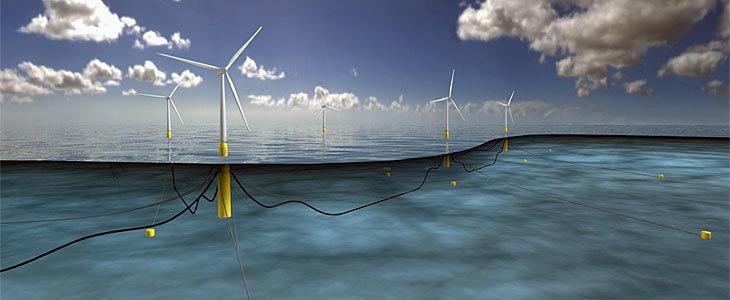Scottish Windmills Generate 106% of Electricity Required
The wind speed on this day reached 185 km / h
Ardrossan wind park in the Scottish North Ershire . Photo: Vincent van Zeijst
On the last Sunday of August 7, Scotland set a record. For the first time in history, wind power plants generated more electricity per day than the entire country consumes. The ratio of power generation to energy consumption was 106% . As in Germany , the Scottish authorities have to solve the problem of excess energy. One option is to pay consumers for electricity consumption.
The WWF Scotland environmental group reports that on 7 August 2016, Scotland’s wind turbines supplied 39,545 MWh of electricity to the grid, while national energy consumption was 37,202 MWh.
WWF Scotland experts admit that this happened sometime in the past, but since the beginning of their monitoring of the state of the power system in 2015, this is the first such case. “Given the desire for a full transition to renewable energy, this is an important milestone,” said Director Lang Banks.
')
This achievement was made possible by the fact that August 7 was an unusually windy day, and this is putting it mildly. The wind speed on this day reached 185 km / h in some regions of the country, leading to the closure of bridges, the delay or cancellation of rail and flights.

Weather forecast from the British Weather Center August 7, 2016
Due to the wind in the fourth largest Scottish city of Dundee, the power supply was partially cut off, and the oil drilling rig at sea broke away from the tugboat and sailed to the shore .
Despite all these incidents and the rampant of the elements, the representatives of the environmental movement noted undoubted success: for the first time in history, wind power plants generated more electricity per day than the entire country consumes. True, for obvious reasons, on Sunday energy consumption was minimal: the plants did not work, the citizens were hiding from the wind, and some localities were de-energized. Nevertheless, the “green” future on this day became real: Scotland could well refuse to use oil, gas and coal.
Interestingly, Scotland owns approximately 60% (!) Of all oil reserves in the European Union (they are located mainly in the North Sea). Despite such huge oil reserves, the country is still promoting "green" energy. This trend has been particularly active in recent years, when the cost of renewable electricity has fallen particularly low .
In April, the Scottish Ministry of Energy and Climate Change announced the 2015 results. During that year, 57.7% of the total electricity consumed was obtained from wind power plants, so the goal of fully switching the country to renewable energy sources by 2030 looks quite realistic.
Scotland removes wind energy not only on land but also at sea. Last year, the world's largest floating wind power station with five turbines of 6 MW each was built there. The platform will be anchored to the seabed and connected by cable to the shore. It will be located about 25 km from the coast. The Statoil plant's Hywind Scotland installation should produce approximately 135 GWh per year.

In the event of a repetition of such energy-successful days as the 7th of August, the Scottish Government hopes to export excess energy resources to neighboring areas of England.
Scotland is not the only country that celebrates progress in the development of clean energy. Germany on some days gets up to 95% of electricity from renewable sources, and Portugal recently lived four days in a row on solar energy.
It seems that the future without oil will come very soon. According to analysts at Bloomberg New Energy Finance (BNEF), from 2025, the consumption of fossil fuels in the world will begin to decline, and by 2027, the construction of new solar and wind power plants will become cheaper than the content of existing gas and coal.
Source: https://habr.com/ru/post/369573/
All Articles